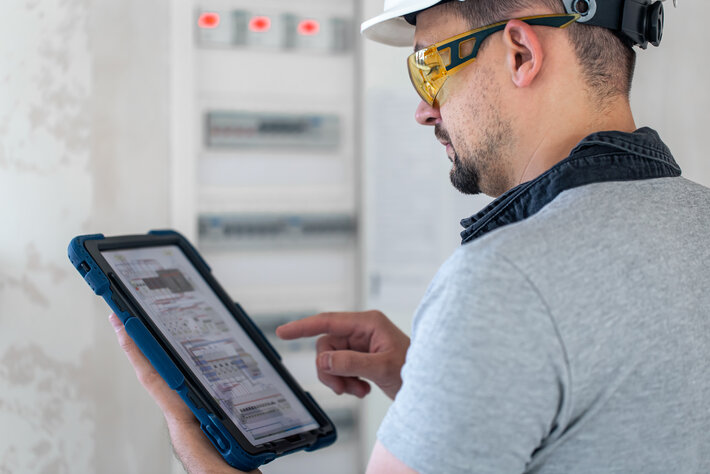A recent Public Accounts Committee (PAC) report concluded that progress in the UK’s smart meter rollout is “too slow’’, that deadlines for completion have repeatedly moved and not enough has been done to garner public support. It also warned that an estimated seven million communications hubs, which form part of the electricity smart meters, will need replacing because they will lose functionality when 2G and 3G networks close.
Companies impacted by the switch off will no doubt have new planned deployments that they will need to design with an alternative technology in mind. As they do, they should take on board a range of factors for secure, resilient and flexible installations.
Network sunsetting is one of the biggest challenges to hit the IoT industry. While the majority of consumers refresh their devices every few years, and navigate technology changes in a seamless fashion, this is much more challenging for the majority of IoT applications with large numbers of devices in the field for anything between three and 15 years. Even if 2G will be around for several more years, 3G switch off is imminent and businesses need to act urgently.
Cellular IoT’s importance in the energy sector
Energy is one of those sectors potentially impacted by network phase out, as the PAC report highlights. IoT use is increasing as the sector ushers in a new era in energy production and management. From microgrids to local energy trade, cellular IoT solutions enable more intelligent energy generation, storage and distribution.
Smart metering, through connected meters, is a case in point. It supports the accurate recording of energy consumption and data transfer to energy suppliers. This equips energy companies to provide accurate bills and help them understand and optimise energy distribution.
Homeowners and business managers, meanwhile, benefit from smart meters through insight into, and therefore control over, their energy usage. They can identify unnecessary waste and overuse of high-energy appliances to make informed choices to reduce their consumption, thereby saving costs and contributing to energy efficiency for environmental sustainability.
Cellular provides a logical and reliable connectivity option for smart meters. It comes without the need to provide communications infrastructure and has the benefit of scalability.
Alternatives to 2G/3G for smart meters
Legacy network sunsetting has already begun for some networks operating in the UK, with more coming imminently, so most impacted companies will be far into their migration planning or execution. Many suppliers to the energy industry will serve international markets though and will need to factor in the timetable for networks they rely on in other countries.
There are a number of network technology alternatives they can look to for IoT service continuity, each with its own merits.
Low power wide area networks (LPWANs), specifically LTE-M and NB-IoT, are natural choices. They can deliver IoT connectivity cost-effectively over wide geographic areas, and their signal penetration can reach, for example, basement installations.
LTE-M provides similar speed and latency to 3G and can handle higher bandwidth requirements, of up to 1GB of data a month. NB-IoT is suited to lower data (less than 5MB a month), appropriate for smart meters that only need to send and receive small packets of data.
However, it is important to note that LPWAN comes with geographic considerations. Although it is improving, for a long time NB-IoT was only available on the west side of the UK and LTE-M only available in the east. The mobile network operators (MNOs) in the UK, and indeed the rest of the world (with only a few exceptions), have chosen to deploy one but not both of these LPWAN technologies simultaneously, which creates uncertainty and limits resilience. To save costs, simplify logistics and future-proof smart meter rolls-outs, the industry needs a single SIM which can connect to any of the available networks.
4G’s LTE CAT-1 provides an alternative for embedded cellular connectivity. It is already present in every network’s technology stack across the globe so companies can plan for a single SIM to access multiple networks in all countries and to keep stock keeping unit (SKU) processes simple and streamlined. Without careful design implementation, LTE CAT-1 BIS (the single antenna version) could result in a shorter device battery life but the hardware (RF module and antenna) and operational cost per megabyte are comparable. Whilst LTE CAT-1 BIS would be a less typical choice to connect smart meters, and its power consumption will be higher than NB-IoT, on occasion it can provide the right technology solution.
How to prepare to migrate away from legacy networks
Energy companies impacted by legacy network sunsetting will almost certainly already know which devices this affects in the field. They will require either a SIM swap (if hardware is compatible), a meter swap or a downgrade from a smart to a regular meter. Companies should, of course, assess any new planned deployments to ensure they are designed to connect via an alternative technology.
Connectivity partners will be able to work with impacted companies to integrate connectivity and hardware and advise on the alternatives and their suitability for smart meter connections. They can also provide guidance on solution deployment at-scale on the chosen alternative technology, connecting installations seamlessly across a range of networks, and in-life management.
Factors to consider when connecting smart meters and other grid equipment
Energy networks are national critical infrastructure and are already being targeted by cyber-attacks. Authentication of connected devices deployed on a massive scale is a challenge which the IoT industry has solutions for and continues to innovate. These innovations include IoT SAFE, which is a SIM standard that embeds security credentials in SIM hardware and defines how those credentials are shared with server endpoints to achieve secure zero-touch provisioning. Beyond that, AI technology in the network can be used to constantly monitor device, network and application-level behaviour across massive numbers of devices to detect and react to cyber events.
Companies should also think about the long-term, smooth running of their installations. They may need to change network operator over time as new contract deals come into play, or they need a more reliable network to turnaround poor coverage or performance issues. eSIM technology enables this, offering the flexibility with remote SIM provisioning to perform ‘over-the-air’ profile changes if required.
Smart connected technology is transforming energy infrastructure. The IoT enables smart metering so that energy suppliers and customers can make informed decisions to optimise usage and supply, and benefit the environment. Companies with existing smart meters that rely on legacy networks, and those planning future installations, should consider the alternative technologies available to them. As they design their migrating and new deployments, they should also heed the importance of security, flexibility and resilience.

Article by Paul Bullock, a chief product officer at Wireless Logic.
Comment on this article below or via X: @IoTNow_










